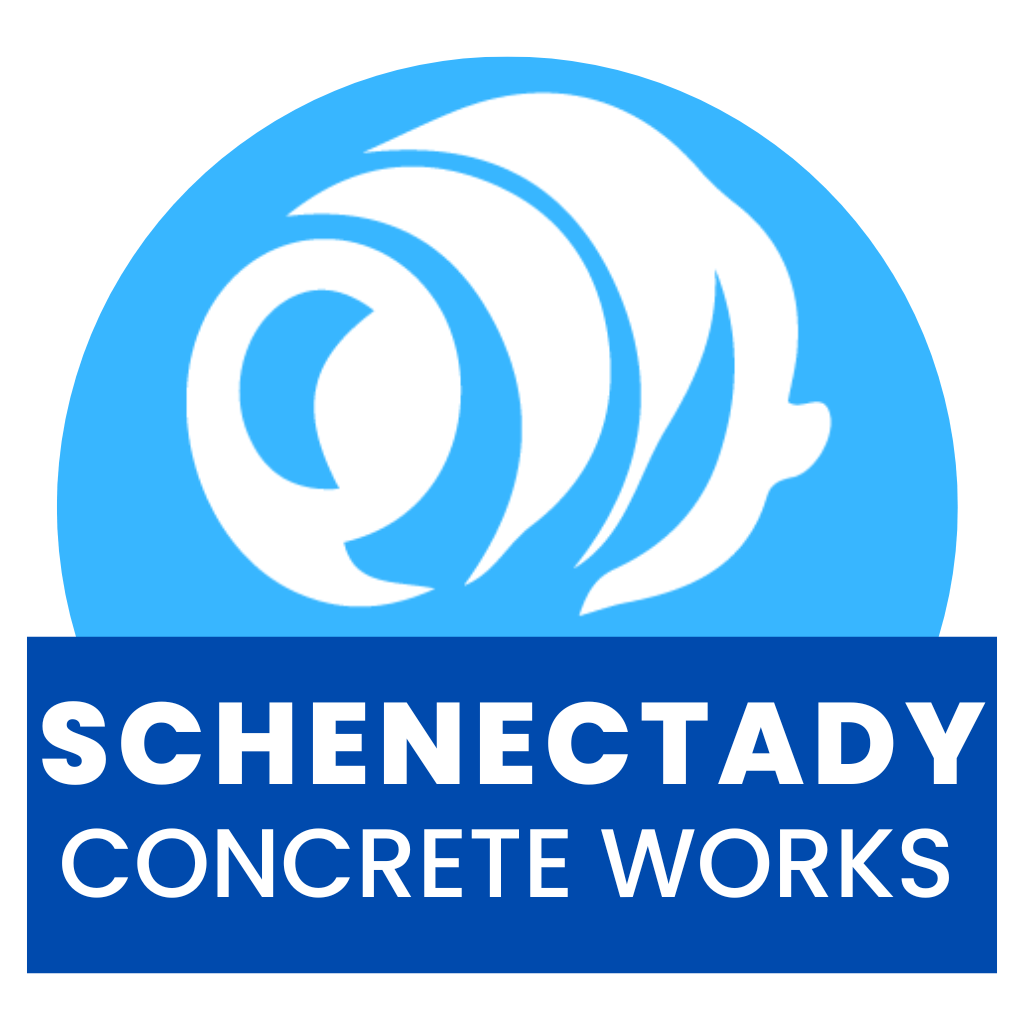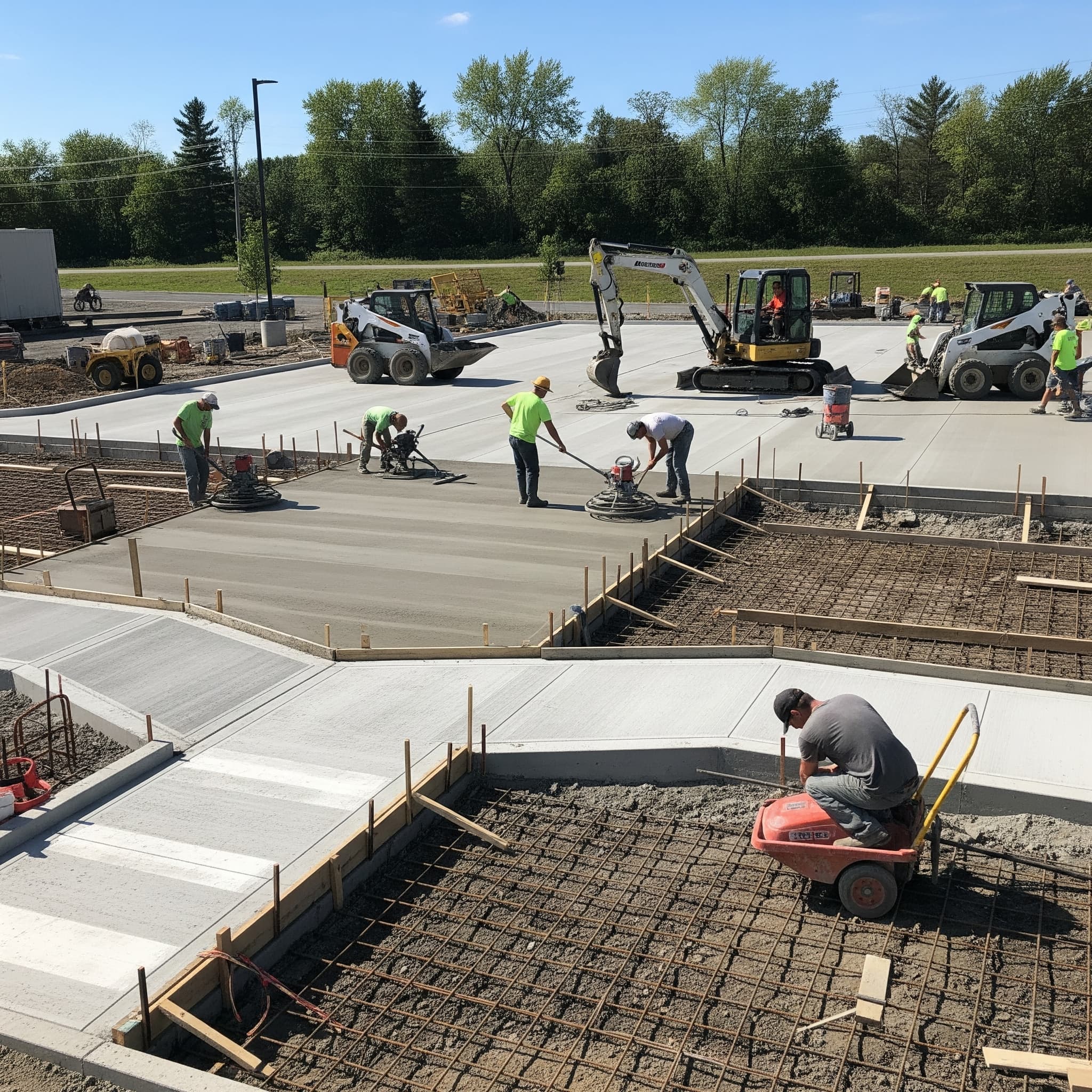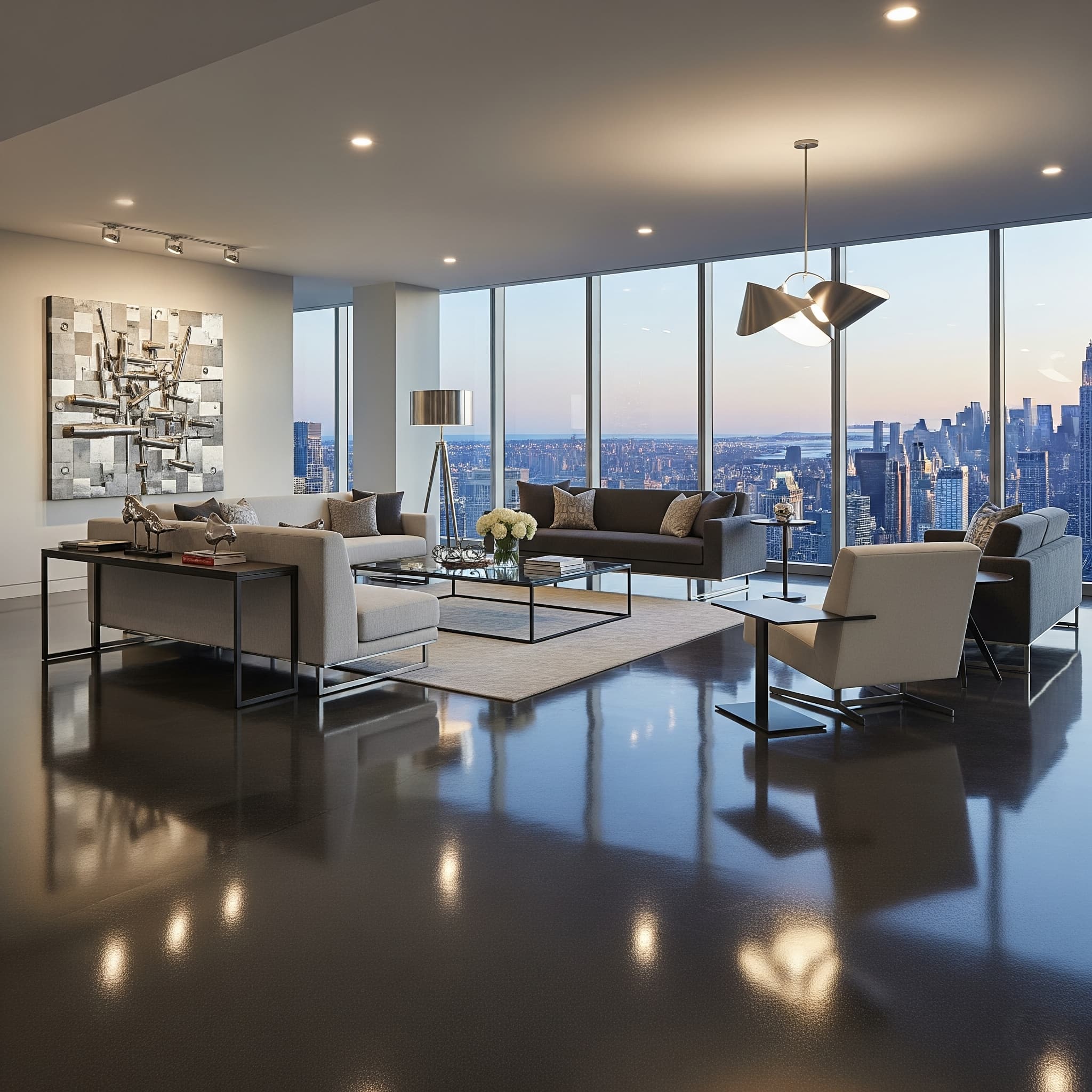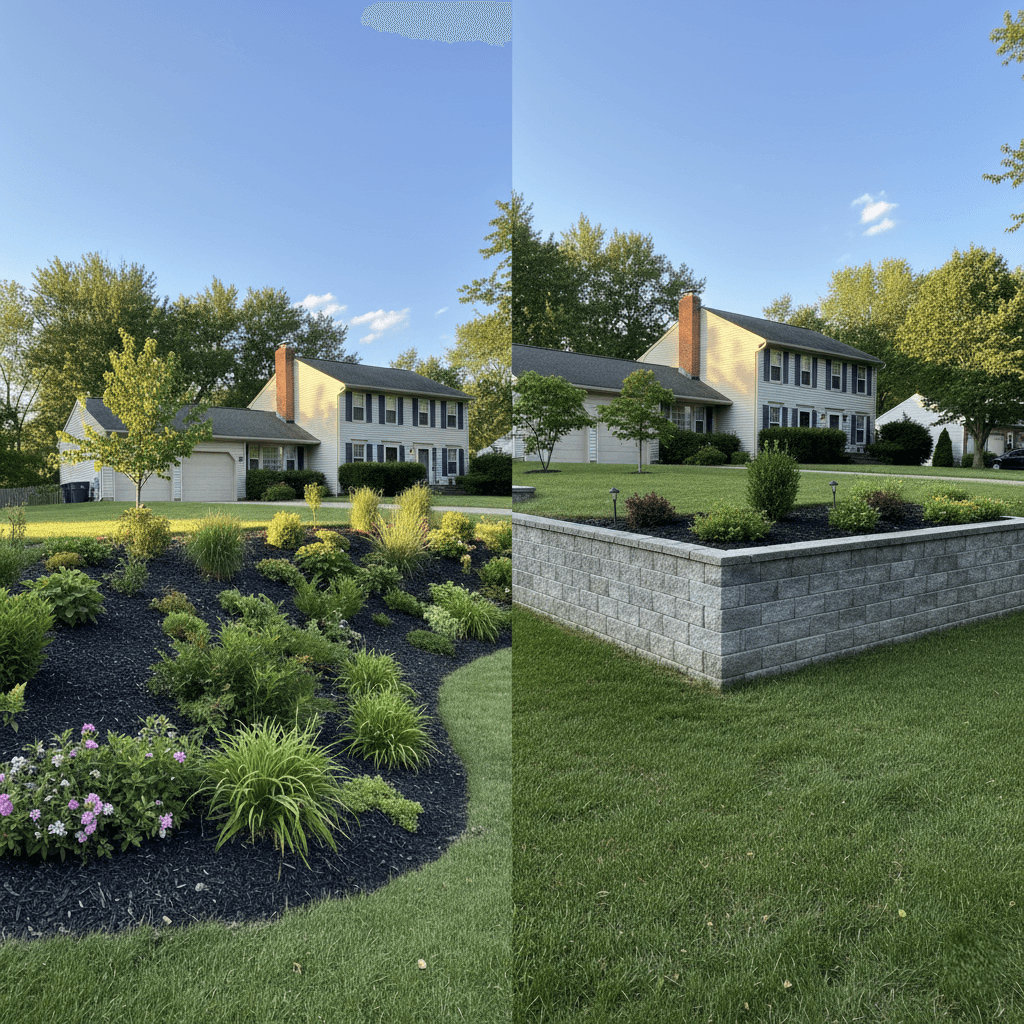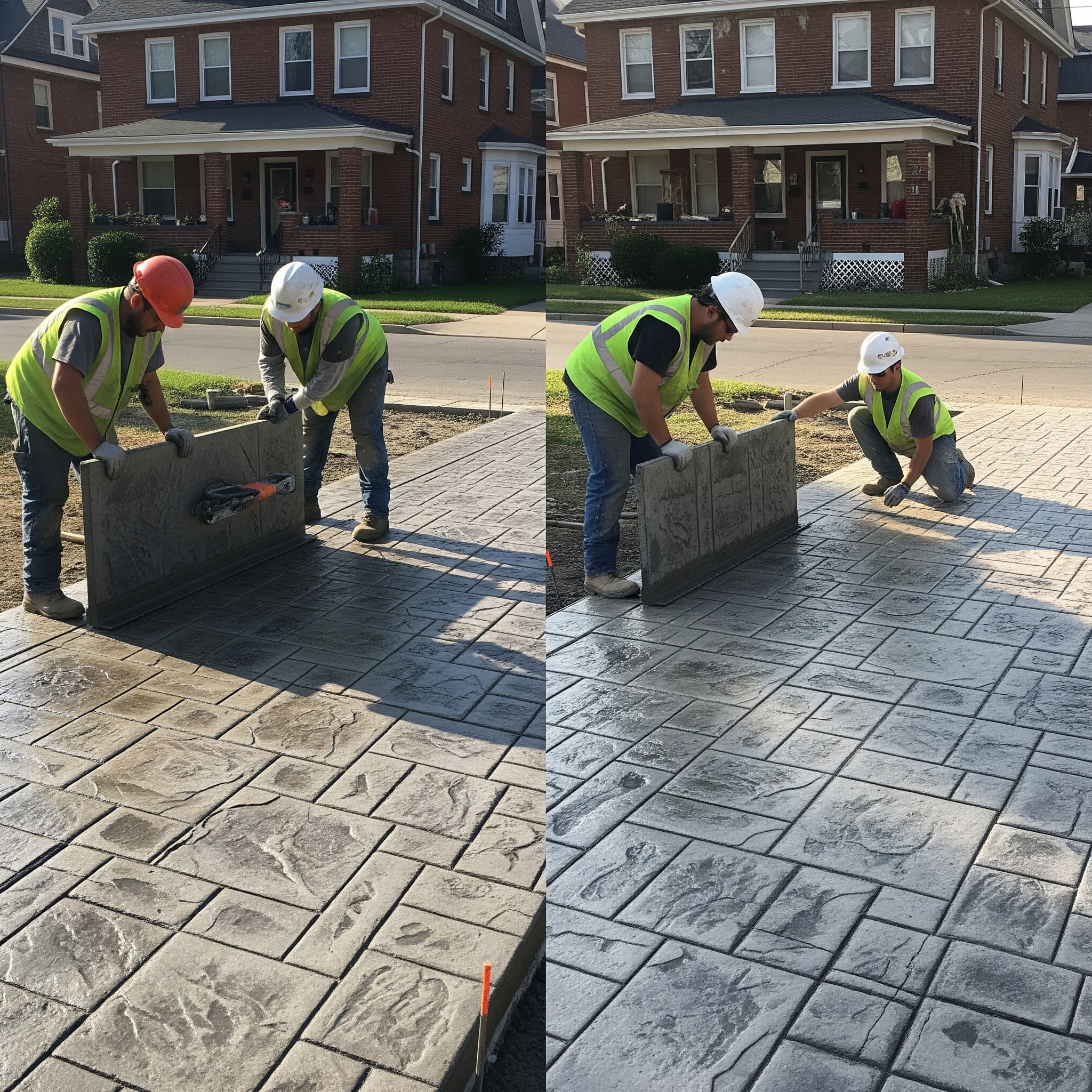
The Rise of Decorative Concrete: Enhancing Schenectady Homes
Decorative Concrete Schenectady
Schenectady homeowners increasingly embrace decorative concrete as a versatile solution that combines durability with aesthetic appeal for both interior and exterior applications. This architectural trend transforms ordinary concrete surfaces into stunning design elements that rival natural stone, brick, and premium materials at a fraction of the cost. Modern techniques include stamped patterns, acid staining, exposed aggregate finishes, and polished surfaces that complement everything from historic homes in the Stockade District to contemporary properties in the GE Realty Plot. The decorative concrete market continues expanding as homeowners discover the long-term value and design flexibility these solutions provide. Professional installation ensures proper execution while maximizing both visual impact and structural performance throughout our challenging regional climate.
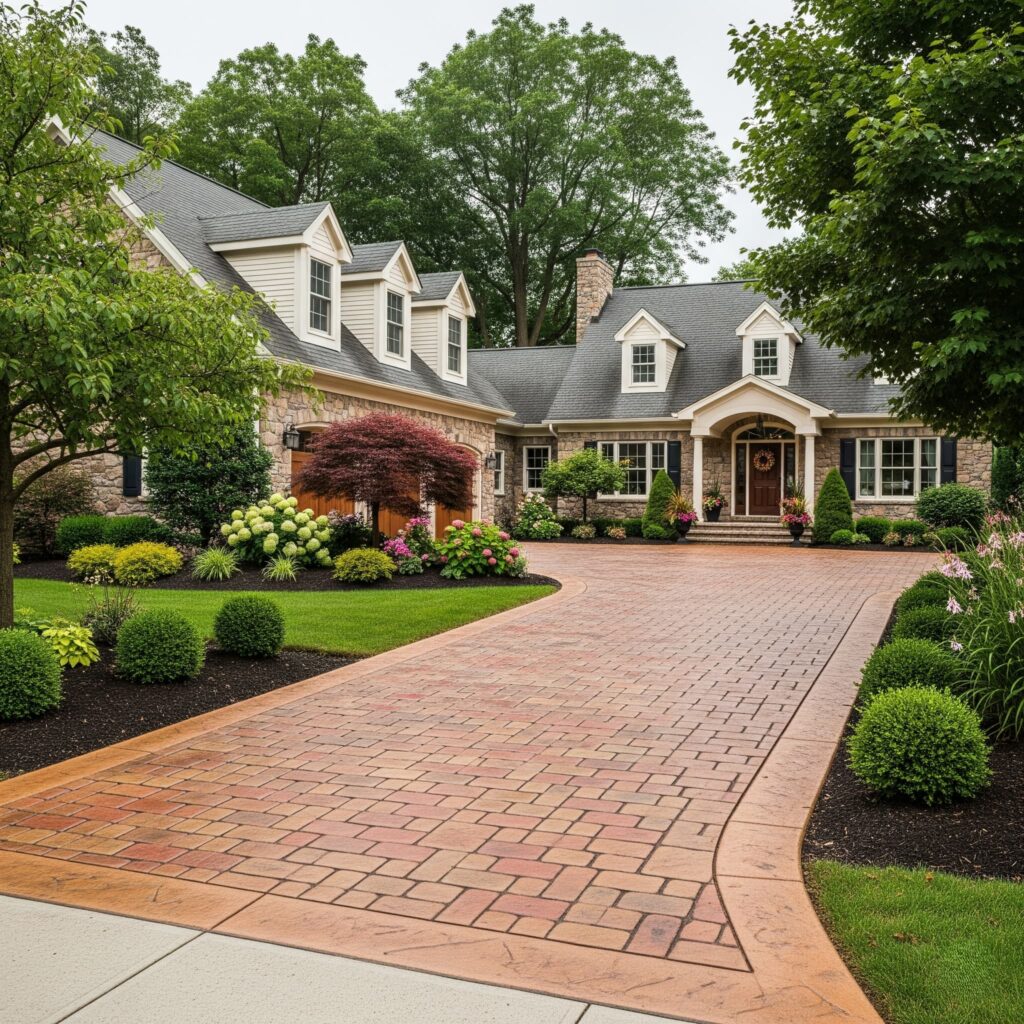
Current Trends in Decorative Concrete Design
Bold color applications lead 2024 decorative concrete trends, moving beyond traditional grays to include rich earth tones, vibrant blues, and sophisticated charcoal finishes that make striking statements. Homeowners throughout Schenectady select colors that complement their architectural styles while expressing personal preferences through permanent surface treatments. Acid staining creates variegated color effects that mimic natural stone variations, providing organic beauty that enhances both traditional and contemporary home designs.
Geometric patterns and custom designs gain popularity as homeowners seek unique elements that reflect individual style and property character. Minimalist approaches featuring clean lines and large uninterrupted surfaces appeal to modern aesthetic sensibilities while reducing maintenance requirements. Contrasting borders and accent features combine different decorative techniques to create sophisticated layered effects that define spaces and enhance visual interest.
Stamped Concrete Pattern Evolution
Contemporary stamped concrete patterns include realistic wood plank textures, natural stone formations, and intricate tile designs that replicate expensive materials with remarkable accuracy. Advanced stamping tools create deeper impressions and more detailed textures than previous generations, resulting in convincing material imitations. Custom stamp designs incorporating logos, family crests, or architectural motifs provide personalized touches for discerning homeowners.
Seamless integration between stamped areas and plain concrete creates sophisticated transitions that define different functional zones without abrupt material changes. Properties near Central Park and established neighborhoods particularly benefit from patterns that complement existing landscaping and architectural elements while maintaining neighborhood character.
Benefits of Decorative Concrete for Homeowners
Cost-effectiveness represents a primary advantage of decorative concrete compared to natural materials, with installation costs typically 30-50% lower than equivalent stone or premium paving options. Long-term maintenance requirements remain minimal compared to alternatives, with periodic sealing and routine cleaning maintaining appearance for decades. This economic benefit particularly appeals to homeowners managing renovation budgets while seeking maximum visual impact.
Durability exceeds most alternative materials, with properly installed decorative concrete withstanding freeze-thaw cycles, heavy loads, and normal wear while maintaining structural integrity. Climate resistance becomes especially important in Schenectady’s environment, where temperature variations and precipitation challenge outdoor surfaces throughout the year. Professional-grade sealers protect against moisture penetration, staining, and UV degradation that could compromise appearance.
Property Value Enhancement
Real estate professionals recognize decorative concrete installations as valuable improvements that enhance curb appeal and marketability for properties throughout the region. Quality installations provide immediate visual impact while offering long-term performance that appeals to potential buyers seeking low-maintenance features. Properties with professionally designed and installed decorative concrete often command premium pricing compared to similar homes with standard concrete or alternative materials.
Investment return calculations favor decorative concrete projects that provide both functional improvements and aesthetic enhancement. Unlike some home improvements with limited appeal, decorative concrete serves practical purposes while delivering visual benefits that broad market segments appreciate during property evaluations.
Popular Applications in Schenectady Homes
Driveways represent the most visible application for decorative concrete, creating impressive first impressions that welcome guests while providing durable vehicle access. Stamped patterns replicating brick or cobblestone complement historic neighborhood character while offering superior performance compared to individual unit installations. Color coordination with home exteriors and landscape elements creates cohesive design themes that enhance overall property presentation.
Patio and outdoor living areas benefit significantly from decorative concrete treatments that create elegant entertaining spaces resistant to weather and heavy use. Pool decks require slip-resistant textures combined with attractive finishes that provide safety while maintaining resort-like aesthetics. Properties throughout the Union College area often feature decorative concrete patios that serve as extensions of indoor living spaces throughout favorable weather periods.
Interior Applications and Innovation
Basement floors increasingly feature polished concrete finishes that transform utilitarian spaces into attractive recreation areas, workshops, or additional living spaces. Stained concrete provides rich color effects suitable for kitchens, living areas, and commercial applications where durability and easy maintenance are priorities. Radiant heating systems integrate seamlessly with concrete floors, providing comfortable warming throughout the winter months while maintaining attractive surface finishes.
Countertops and architectural elements utilize specialized concrete mixes and finishing techniques to create custom surfaces that complement specific design themes. These applications require skilled craftsmen familiar with forming, finishing, and sealing procedures that ensure both durability and aesthetic success in demanding interior environments.
Design Integration with Schenectady Architecture
Historic home compatibility requires careful material and color selection that respects architectural heritage while providing modern performance and convenience. Properties in the Stockade Historic District benefit from decorative concrete solutions that complement period architecture without compromising authentic character. Neutral earth tones and traditional patterns often provide appropriate choices that satisfy both aesthetic and regulatory requirements.
Contemporary home designs embrace bold decorative concrete applications that serve as architectural focal points and design statements. Large format installations with minimal joints create clean, modern aesthetics that complement current architectural trends. Integration with landscape design ensures decorative concrete elements coordinate with plantings, hardscape features, and outdoor lighting systems.
Climate-Responsive Design Considerations
Schenectady’s seasonal temperature variations require decorative concrete installations designed for thermal expansion and contraction without compromising surface integrity. Proper joint placement and reinforcement details accommodate movement while maintaining attractive appearances throughout varying conditions. Air entrainment and appropriate concrete mixtures ensure freeze-thaw resistance essential for long-term performance in our regional climate.
Drainage integration becomes critical for decorative concrete installations that must shed water effectively while maintaining aesthetic appeal. Surface textures and slope designs facilitate runoff without creating slip hazards or standing water that could damage installations or create safety concerns during winter months.
Professional Installation Considerations
Experienced contractors understand timing requirements for decorative concrete applications that demand coordination between placement, stamping, coloring, and finishing procedures. Weather conditions significantly affect installation success, requiring professional judgment about appropriate timing and protective measures during placement and curing periods. Quality control procedures ensure that color consistency, pattern alignment, and surface finish meet design specifications.
Subgrade preparation requirements for decorative concrete exceed those for basic installations due to appearance and performance expectations. Proper base course installation, compaction, and elevation control prevent settlement that could create unsightly surface irregularities or structural problems. Professional installation includes appropriate reinforcement placement and joint design that accommodates building loads and environmental stresses.
Material Selection and Quality Standards
High-performance concrete mixtures designed specifically for decorative applications ensure optimal workability during stamping while achieving the required strength and durability characteristics. Color additives require careful batching and mixing procedures to achieve consistent results across large installations or multiple placement days. Professional suppliers understand regional aggregate sources and mixture proportions that perform reliably in local conditions.
Sealer selection affects both appearance and long-term maintenance requirements, with options ranging from natural-look penetrating sealers to high-gloss topical treatments. Professional guidance helps homeowners select appropriate products that balance aesthetic preferences with performance requirements and maintenance expectations throughout the anticipated service life.
Maintenance and Long-term Care
Routine maintenance involves regular cleaning with appropriate products and techniques that preserve surface appearance without damaging decorative treatments. Annual or biennial sealer reapplication protects against moisture penetration, staining, and UV exposure while maintaining color vibrancy and surface integrity. Professional maintenance services understand proper cleaning methods and sealer compatibility requirements.
Winter care procedures include appropriate ice control methods that protect decorative surfaces while maintaining safety during freezing conditions. Mechanical snow removal requires techniques that avoid damage to stamped patterns or color treatments. Properties throughout the greater Schenectady area benefit from maintenance programs that address specific regional challenges while preserving decorative concrete investments.
Repair and Restoration Options
Minor damage from settling, impact, or normal wear can often be repaired through specialized techniques that restore original appearance and performance. Color matching and pattern recreation require skilled professionals familiar with original installation methods and materials. Early intervention prevents minor problems from developing into major restoration projects that could require complete replacement.
Enhancement opportunities allow homeowners to modify or expand existing decorative concrete installations as needs change or design preferences evolve. Additional stamping, color application, or texture modification can update appearances while preserving structural integrity and maximizing return on original investments.
Environmental and Sustainability Benefits
Decorative concrete provides environmental advantages through material longevity that reduces replacement cycles and associated resource consumption compared to alternative materials. Local aggregate sourcing minimizes transportation impacts while supporting regional suppliers and reducing project costs. Permeable decorative concrete options help manage stormwater runoff while maintaining attractive surfaces for appropriate applications.
Energy efficiency benefits include thermal mass properties that moderate temperature swings and reduce heating and cooling requirements. Light-colored surfaces reflect solar radiation, reducing heat island effects around homes while potentially lowering air conditioning costs during summer months. Sustainable practices appeal to environmentally conscious homeowners throughout Schenectady’s educated community.
Future Trends and Innovations
Technology advances continue expanding decorative concrete possibilities through improved coloring agents, enhanced stamping tools, and innovative surface treatments that provide even greater design flexibility. Smart concrete applications incorporating heating elements, LED lighting, or sensor technology represent emerging opportunities for enhanced functionality combined with aesthetic appeal.
Customization trends toward unique, site-specific designs that reflect individual homeowner preferences and property characteristics. Digital design tools enable the visualization of proposed installations while facilitating communication between homeowners and contractors during planning phases. These innovations help ensure final results meet expectations while minimizing costly changes during construction.
At Schenectady Concrete Works, we understand decorative concrete’s growing popularity among local homeowners and provide expert guidance throughout the design and installation processes. Our experience with regional climate conditions, architectural styles, and local preferences ensures decorative concrete projects enhance property values while delivering lasting beauty and performance that homeowners enjoy for decades to come.
